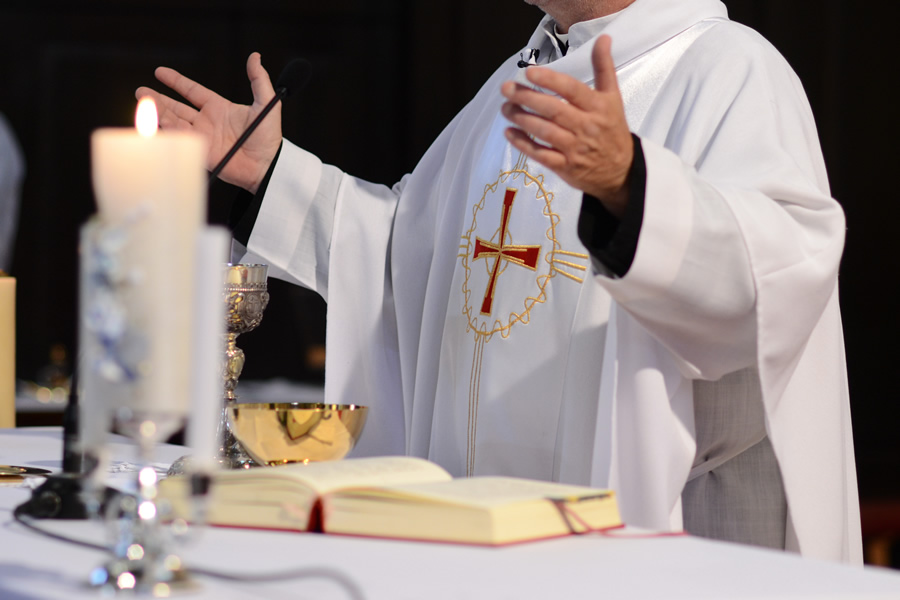
Brief History of Mass
02-20-2022Weekly ReflectionBrian Guillot, Director of Faith FormationThe Church has celebrated the Eucharist since Jesus’ Resurrection, but it has not always looked the same. Originally, the small Christian communities gathered for the evening meal in one of its members’ houses. Prayers, hymns, and even readings from one of Paul’s letters were included as parts of the meal. Of course, most importantly, the host blessed and shared bread and wine as the body and blood of Christ. St. Paul discusses some of the issues that arise as a result of these early liturgical gatherings in chapter 11 of the First Letter to the Corinthians.
By the second and third centuries, the meal disappeared. A more formal Eucharistic Prayer became the center of the ritual. It was during this prayer that the bread and wine were consecrated with Communion following. In fact, we still recite the same introductory prayers today. Unlike today, however, the Eucharist was only celebrated on Sundays (with few exceptions) early in the morning since Sunday was still a workday. The rite resembled a synagogue service with readings from one of the prophets or apostles followed by a sermon by the presider and prayers for the needs of the community. In some areas, the service also included an Offertory procession of bread, wine, and other gifts.
Once persecution ended and Christianity became legal, the liturgy expanded to include an entrance rite with prayers at the foot of the altar. The Liturgy of the Word became the core of the early part of the Mass. Just like today, it included Scripture readings with responses, recitation of the Creed, and intercessory prayers. Since the Gospels now existed as written documents, they were included as part of the Scripture readings. As we do today, the gospel readings were given more solemnity with the inclusion of candles and incense. The preparation of the gifts was also included, but the prayers recited silently by the presider did not exist until the ninth century. After the preparation came the Eucharistic Prayer and the distribution of Communion. After Communion came the blessing and the dismissal.
Since the second century, the Eucharistic Prayer has included the doxology (Through him, with him, in him …). For many centuries, however, the Eucharistic Prayer was recited inaudibly. In order to compensate, the elevation of the host and chalice were introduced in the thirteenth century. By the seventeenth century, fewer and fewer Mass attendees were receiving Communion and the responses were given by altar servers or sung by the choir.
Through the reforms of the Second Vatican Council, the Church re-emphasized the full, active, and conscious participation of everyone attending Mass. We are encouraged to respond, to sing, and to receive Communion. At Mass, Christ is present in four ways. First, in those gathered for worship. Second, in the presiding minister. Third, in the proclaimed Scripture readings. Fourth, in the consecrated bread and wine.
BACK TO LIST